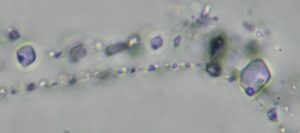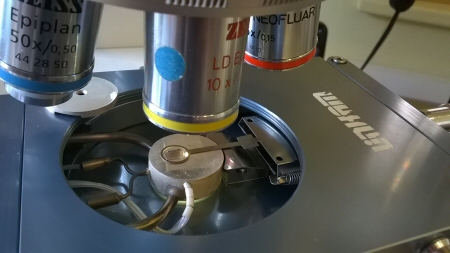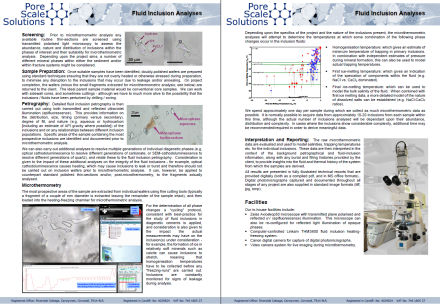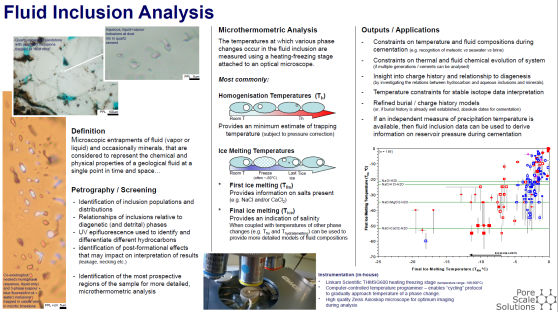What are fluid inclusions and why might you want to analyse them?
![]()
Fluid inclusions are fluid-filled vacuoles sealed within minerals. Using a combination of microscopy techniques, and specialised equiment to measure the temperatures at which the trapped fluids undergo various phase changes, we can derive information about the temperature and pressure conditions during inclusion trapping, as well as indications of the compositions of the fluid(s) present (salinities of aqueous fluids, estiamted API for hydrocarbons using epifluorescence), during mineral growth and inclusion trapping.
Fluid inclusion analysis has applications in reservoir geology studies (understanding diagenetic processes and fluid histories), general diagenetic studies, mineral deposits studies, and palaeohydrogeological studies.


We have in-house facilities for fluid inclusion microthermometric analysis. The system comprises a Linkam THM600 heating and freezing stage, attached to a Zeiss Axioskop microscope, with transmitted light and epifluorescence illumination. The Linkam stage enables heating / freezing in the temperature range ~-190 to +600degC.

This enables us to provide:
- General petrographical information on the distribution and characteristics of inclusions, including the differentiation of different types of liquid hydrocarbon-bearing inclusions.
- Information on the salinities and chemistry of the fluids (using, amongst other measurements, first and final ice melting temperatures), and thereby better constraints on potential fluid sources.
- Details of inclusion homogenisation temperatures that can be used to provide a minimum estimate of inclusion trapping temperatures.
This data, coupled with general petrographical and diagenetic data and interpretations, can be combined to refine burial, structural and fluid history models.
A detailed account of our approach to fluid inclusion petrographic and microthermometric analysis is given in this brochure.
A briefer account of our approach is given here.


